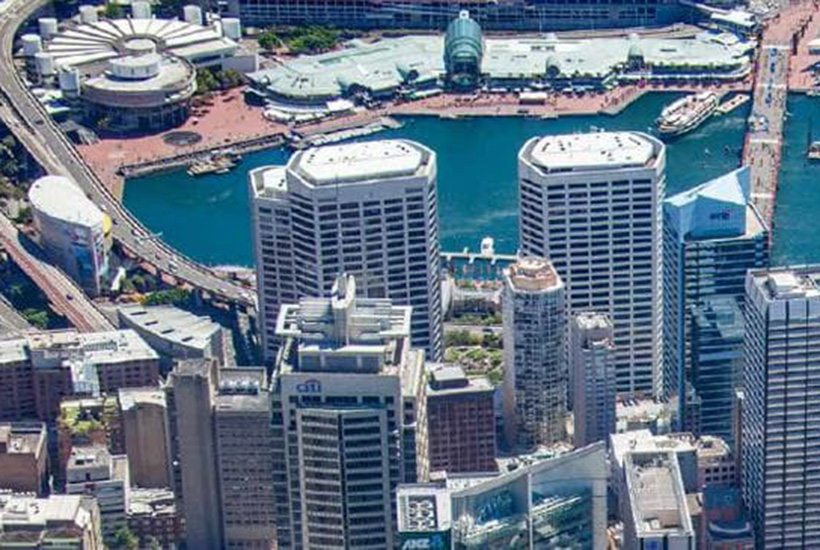Where’s the smart money in office investments?

“Is it too late to invest in the Sydney and Melbourne office markets? Is it too early for Brisbane and Perth?”
There’s a logic to office cycles, both for passive investment and development. And Australian office markets are highly cyclical — just look at the different cities now with their cycles out of sync.
Perhaps the reason lies in the long lead times in the development process, which prolong periods of under-supply where increases in supply take a long time before developments are completed. And which cause periods of substantial oversupply when development isn’t switched off in time.
Commercial Insights: Subscribe to receive the latest news and updates
In leasing markets, the imbalance of demand and supply drive movements in rents and property values. Moreover, recently investment markets responding to low bond rates have led to firming yields, hence boosting property values for given income and improving development feasibilities.
But the response of development is slow, both in upswing and downturn, usually responding to the current financial logic of development rather than anticipating future conditions. Indeed, unless they’re prepared to spec projects, financiers won’t let them. And it’s the development logic that drives building activity and associated services (real estate, finance, legal, architectural, building, materials, services) and jobs. It’s that building — once finished — that adds to supply in leasing markets.
On the other hand, rents, and hence prices, respond quite quickly to leasing market conditions. Typically, in periods of oversupply rents and property values fall below development cost levels and the amount of new projects fall. By the same token, in tight markets rents and property prices rise substantially above development costs (excluding land cost), boosting residual site values, that is, whatever is left over in property values after development costs and hence how much developers can afford to pay for sites.
The upshot is that we have long periods when financial feasibilities don’t work and building remains weak, allowing the slow absorption of excess stock. By the time leasing markets have tightened sufficiently to raise rents to levels that will underwrite new building, the long lead times in development ensure that the leasing market will stay tight and rents will continue to rise until sufficient new supply comes on stream.
My point is that the supply adjustment is slow and has a lot of momentum. It always takes a long time to meet market demand, both in upswing and downturn, and a long time to turn the ship around and adjust supply. That prolongs the periods of both oversupply and under-supply in leasing markets, and hence the course of rents and prices.
On the demand side, cycles in demand are short and relatively small. They affect leasing conditions in the short term. But they can turn around quickly and are swamped by the magnitude of supply cycles.
So back to the initial question. The current investment logic dictates that, while there may be some more firming of yields, particularly in the stronger markets, we should be looking for tight leasing markets and rising rents to drive prices and total returns.
That’s what’s happening in the Sydney and Melbourne office markets. Was it only three years ago that development feasibilities would only work for high rent/high-value buildings in the CBD? And now, given the partial catch-up in rents, they work for relatively low site value buildings in the suburban centres. Residual site values are positive, but it’s still difficult to justify demolition of substantial older buildings, In the Sydney CBD, the cost of, and time required for, consolidation of the next round of sites will constrain future development. So most of the next round of development will go to the suburban centres. That has already begun.
In Melbourne, there is less constraint on sites and substantial development.
Nevertheless, in both cities, leasing markets will stay tight for some years yet. Demand is weak around Australia and will stay weak but positive as long as the economy stays weak. Barring a demand shock, and I’m not expecting one, we haven’t yet begun the building that will oversupply the market.
There is still a long way to go in this cycle before we oversupply these markets. On my reading, Sydney has another three years, maybe four.
Melbourne has even more. There’s a boom coming — not yet, but it’s building strength. Eventually we will build too much with oversupply triggering a downturn and, if the boom is large enough, a bust.
Which brings us to Brisbane and Perth. They built far too much office space as a result of the boost to office employment, and hence demand, during the mining investment boom. Development is now dramatically lower, of course, but there are still some projects in train in both cities, slowing the absorption of excess capacity. Demand remains weak because of the weak economy, and it will still take some years to tighten leasing markets sufficiently to raise rents to levels that will underwrite the next substantial round of buildings.
How does that relate to passive investment strategy? Particularly now in a period where investors faced with low bond rates are increasing their property holdings?
Since just after the GFC, the investment logic in Sydney and Melbourne has been to do a minor refurb, and reposition (lease up) buildings at higher rents. Through this period of rising rents we’ve seen strong income growth. And there is more to come. Income rises are built into existing buildings as leases expire and new leases, both for sitting and new tenants, are written at higher rents. And market rents have further to rise. But when the market oversupplies there will be a downturn, with the magnitude depending on the extent of oversupply — and we don’t know that yet.
For a long-term “strategic” investor it may already be too late, depending on how they’ve adjusted their hurdle rate. Really, they need to buy around or below development cost. And, excluding site costs, prices are now well above development costs in the strong markets. The first five years’ returns will be good, with annual returns about 7-8%. But the second five years will be weaker. In the longer term they will be about 5%.
The current market is more suited to the shorter-term “tactical” investor who can sell before the downturn. But commercial property isn’t easy to trade. That makes it more challenging. But there are avenues for shorter- term investment.
This is the time when developers and value-add (refurb and reposition) investors crystallise returns on past investments. And it’s the time when fund managers capture growth in demand for property investments.
Meanwhile, in contrast to Sydney and Melbourne, Brisbane and Perth are at different stages of the cycle, past the worst, but with their leasing markets still weak and oversupplied, slowly absorbing the excess capacity created during the boom.
Perth is more oversupplied than Brisbane. Returns will be weak for another five years with annual returns about 4% and stronger in the second five years of next decade. And I worry that because of the strong demand for Australian commercial property, the overflow to the Brisbane and Perth markets have left yields too low with the risk that they will, at some stage, correct. It’s probably too early for a short-term tactical investor. These markets are more suited to a longer-term strategic investor.
And, of course, over time the logic will switch. In about four years it will make sense to play the cycle and invest the returns from Sydney and Melbourne into Brisbane and Perth.
Frank Gelber is an economist.
This article originally appeared on www.theaustralian.com.au/property.







